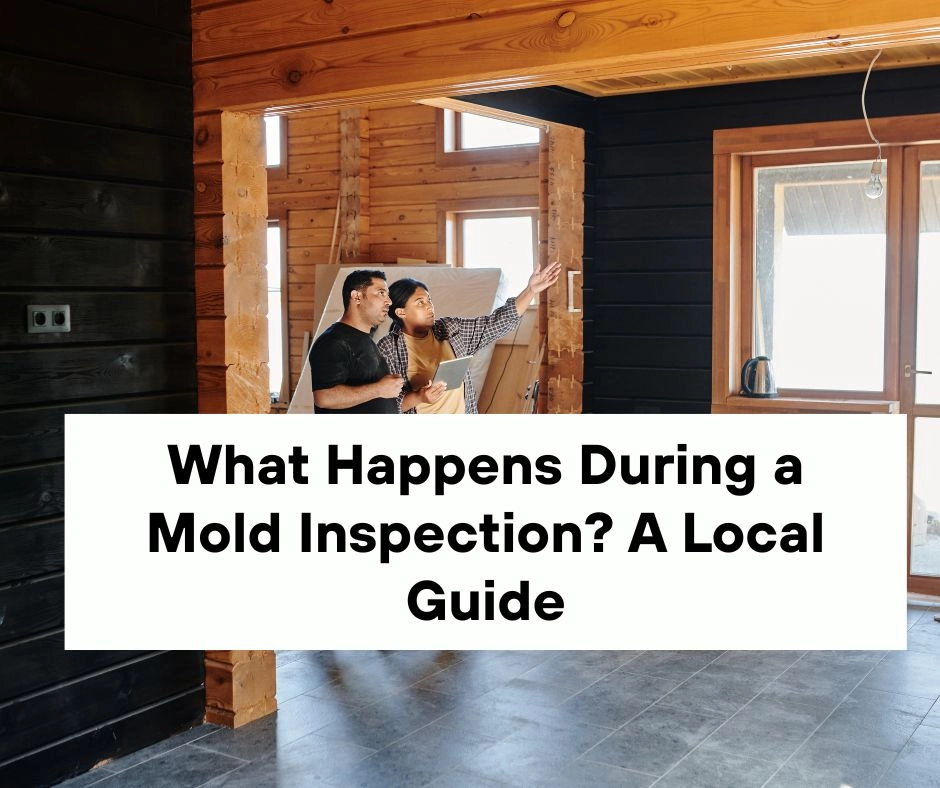
Cookies & Privacy
This website uses cookies or similar technologies to enhance your browsing experience and provide personalised recommendations. By continuing to use our website, you agree... Cookie Policy

Discovering mold in your home can be unnerving. The musty smell, the suspicious stains, or even unexplained health symptoms can leave you feeling overwhelmed and unsure of what to do next. If you've decided it's time for a professional mold inspection, you've made a smart choice. But what exactly happens during this process?
This guide will walk you through a typical mold inspection, demystifying each step so you know exactly what to expect. Understanding the process can help alleviate anxiety and empower you to make informed decisions about your home's health.
When a certified mold inspector arrives at your property, they'll follow a systematic approach to identify any existing mold issues, hidden or visible, and determine their source.
The inspection typically begins with a thorough visual assessment of your entire home, not just areas where you suspect mold. Mold inspectors are trained to spot subtle indicators that the average homeowner might miss. They will look for:
Visible Mold Growth: This includes obvious spots on walls, ceilings, floors, or belongings, but also less apparent signs like discoloration or fuzzy patches in corners or behind furniture.
Signs of Water Damage: Stains, discoloration, peeling paint, bubbling wallpaper, or warped materials (like drywall or flooring) are strong indicators of current or past moisture problems – the primary cause of mold.
Musty Odors: Even if mold isn't visible, a persistent musty, earthy, or damp smell often suggests hidden mold growth. The inspector will try to pinpoint the source of these odors.
Areas Prone to Moisture: They'll pay special attention to high-humidity zones like bathrooms, kitchens, basements, crawl spaces, attics, and utility rooms, checking around pipes, vents, and appliances.
Mold cannot thrive without moisture. Even if a surface feels dry to the touch, there could be hidden dampness behind it. This is where specialized tools come in:
Moisture Meters: Inspectors use these devices to detect elevated moisture levels within building materials (like drywall, wood, and concrete) that aren't visibly wet. This helps them pinpoint hidden leaks or areas of high humidity that are conducive to mold growth.
Thermal Imaging (Infrared Cameras): In some cases, inspectors may use thermal cameras to identify temperature differences that can indicate moisture behind walls or ceilings, without needing to open up surfaces.
While a visual inspection and moisture readings can often confirm the presence of mold or moisture issues, sampling may be necessary for several reasons:
Identifying Mold Type: Samples can determine the specific species of mold present, which can be important for assessing potential health risks or informing the remediation strategy.
Assessing Hidden Mold: If mold is suspected but not visible (e.g., due to a persistent musty smell), air or surface samples can confirm its presence.
Determining Spore Concentration: Air samples can measure the concentration of mold spores in the air, helping to gauge the extent of the problem and potential impact on indoor air quality.
Common types of samples include:
Air Samples: Air is drawn through a specialized cassette that collects airborne mold spores, which are then analyzed in a laboratory.
Surface Samples (Swabs or Tape Lifts): A swab or piece of adhesive tape is used to collect samples directly from suspect surfaces for lab analysis.
The inspector will explain if and why sampling is recommended for your specific situation.
Once the on-site inspection is complete and any samples have been analyzed by a third-party laboratory, the inspector will compile their findings.
Detailed Report: You'll receive a comprehensive report outlining all observations, moisture readings, and, if taken, laboratory results from any samples. The report will identify the source and extent of any mold contamination.
Recommendations: Crucially, the report will provide clear, actionable recommendations for remediation (mold removal) and preventing future mold growth. A reputable inspector will not perform the remediation themselves; this separation of inspection and remediation ensures an unbiased assessment.
To ensure you get the most out of your mold inspection and feel confident in the process, here are some key questions to ask your certified inspector:
Are you certified, and by what organizations? (e.g., IICRC, ACAC)
What does your inspection process typically involve? (Confirm it includes visual, moisture, and potential sampling.)
Will you provide a detailed written report? What will it include?
How long will it take to receive the report and lab results?
What are your fees, and what is included in the cost? Are there extra charges for samples?
Do you perform mold remediation as well, or do you only inspect? (It's generally recommended to choose an inspector who does not also perform remediation to avoid a conflict of interest.)
What are your recommendations if mold is found?
Can you explain the lab results to me in an easy-to-understand way?
Do you offer post-remediation clearance testing? (This verifies that the mold has been successfully removed.)
A professional mold inspection is an investment in your home's integrity and your family's health. By understanding the process and asking the right questions, you can approach it with confidence.
Ready to get started?